As things stand, Tata has a lot riding on the Bolt. The beleaguered carmaker has not had a big success in the hatchback segment since the Indica, and it needs one bad if it wants to continue its phoenix-like rise from the ashes that started with the launch of the Zest compact sedan last year. First impressions are positive and it’s evident Tata has put its heart and soul into getting the Bolt right. The Bolt’s attractive looks are only half the story.
But let’s not jump the gun here. For the Bolt to turn things around for Tata, it has to better its competition. In the diesel hatchback domain, that’s competition from the likes of the Hyundai Grand i10 and the Toyota Etios Liva. The Grand i10 is the biggest seller in the segment, while the Etios Liva recently got a mild update to keep it in the reckoning. Both competitors have their share of strengths and will provide the benchmarks against which the Tata Bolt will be judged today. So, without further ado, here’s the Bolt in its very first comparison.
An eye on style
Good design and desirability have a rather close relation, especially when talking cars. So you would have probably guessed that this was the first order of business for Tata when it set about on Project Bolt. This is the best-looking Tata hatchback yet, and stylish enough to hold your attention. The spread-out headlights, the blacked-out C-pillar and those neat tail-lamps give it a distinct look. It carries off the bright red paint rather well, but we wish Tata had used paint for the C-pillar as well, instead of a cheap vinyl sticker. Also, the Bolt’s Vista roots are very evident in its glasshouse and the general ‘jacked up’ stance. The last bit is something to note because the Bolt’s door sills are relatively high, so getting into and out of the cabin isn’t as easy as in the other cars.

Ingress and egress are best in the Liva, but the car’s overall design isn’t all that successful. Well-proportioned, yes, but too conservative for its own good, Toyota has tried to jazz up styling with a new grille (that oddly looks plucked from a Nissan) — a more comprehensive makeover is long overdue. The Grand i10 does well for itself here. Its styling is neither overtly adventurous as on some other Hyundais, nor does it err towards the boring. That said, the short bonnet area does make it appear smaller than the other two from certain angles.
In reality, the Grand i10 and Liva are about the same length and height, while the Bolt is the longest and tallest car here by a fair margin. There’s little to separate the Bolt and Liva in terms of wheelbase though.
Looking inwards
The exterior dimensions may lead you to believe the Grand i10 will be short on space, but it isn’t. In fact, as four seaters, each of these cars works well. It’s just that where rear legroom is good in the Grand i10, it’s great in the Liva and Bolt. But when you want to squeeze in a fifth occupant, the Grand i10’s relatively smaller width comes into play. Rear seat passengers will have to jostle for shoulder room in the Grand i10, while they will be able to happily adjust in the back seat of the Bolt and Liva. But space is just one element. For overall rear seat comfort, it’s the Liva that wins hands down. The cabin feels airy, the flat but still supportive seats are positioned at a nice height, and cushioning is really good too. The Bolt’s rear seat, in comparison to the other two, isn’t as well cushioned.
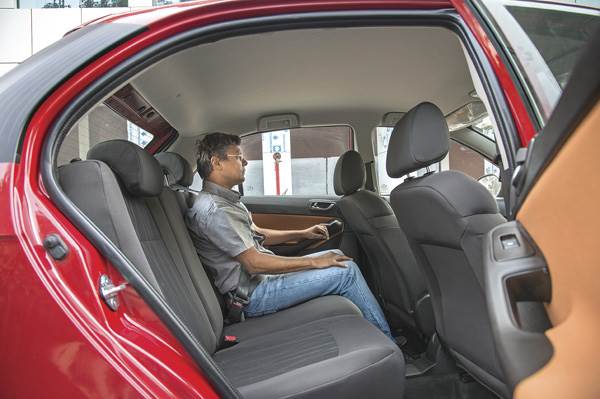
But front seat comfort is good on all three. A point to note is that the i10 is the only car here with a single-piece backrest for the front seats. How effective the whiplash protection its inadequately small headrest can provide is something we hope you don’t ever get the chance to find out. No such issues on the Bolt and Liva though, whose front seats feel larger and more accommodating than the i10’s.
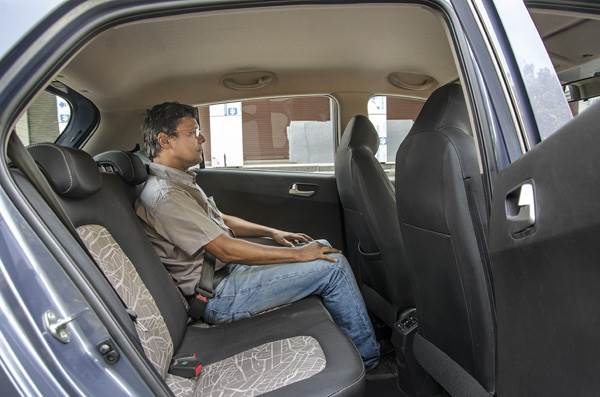
Each of these cars’ dashboards lend each of their cabins a very different flavour. The Bolt shares its dash with the Zest sedan and, as you can tell from the picture, it is very attractive. Our test car came with the two-tone orange-on-black dashboard and it did make the cabin look quite cheerful. However, as on the Zest, the standout element on the Bolt is the Harman-sourced touchscreen for the infotainment system. It’s nice enough to operate, easy to pair your phone to and can even be used to operate the climate control system. But it’s not all hunky-dory in the Bolt. There’s irritatingly little space for smaller items and even the door pockets are pretty unusable. Also, overall plastic quality, though largely good, is still a notch or two down on the standards set by Hyundai.
But excellent fit and finish isn’t the Grand i10 cabin’s only strong suite. Its two-tone dashboard is smart and well thought out as well. The gearbox, positioned at the dash base, is easy to reach and even the audio player, positioned high up, allows for easy access. Sure, the audio system itself may not look cutting edge, but it does feature 1GB onboard audio storage – beats lugging around USB sticks, for sure. The cabin is also full of places to store bottles, cups and knick-knacks. If anything, it’s the clunky-to-operate manual air-con knobs that are a bit of an irritant.
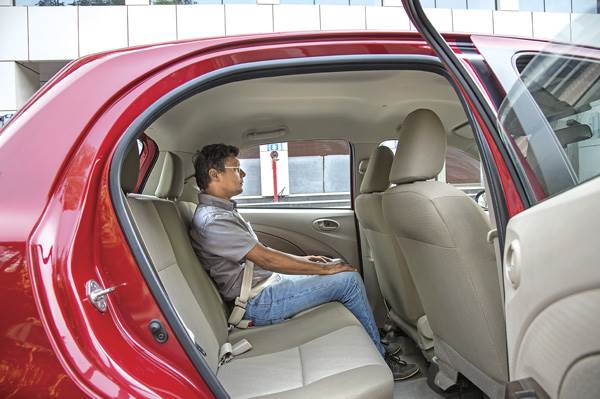
Coincidentally, that’s an issue on the Liva too. Sadly, that’s not where it ends. Not everyone has taken keenly to the placement of the instruments on the centre of the dash. Elsewhere too, the cabin just doesn’t feel special enough despite Toyota’s efforts over the years to spruce it up with lighter colours and more equipment. Quality too is fine, not remarkable. But the Liva does score for practicality. It’s got lots of cubbyholes within the cabin and even the boot is suitably large. Still, you’ll be able to cram most stuff into the Grand i10’s boot. The Bolt’s luggage area isn’t as large, but the option to split and fold the rear seats is helpful when carrying long items.
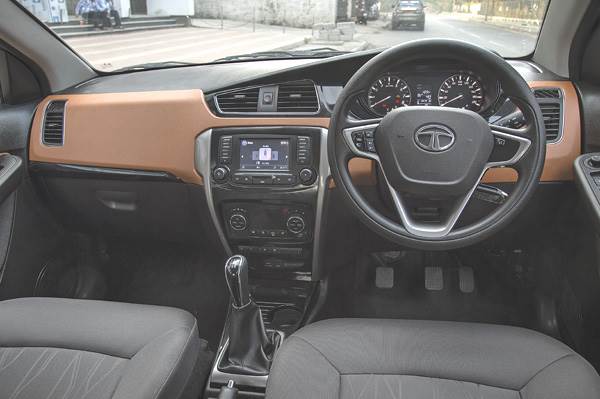
As always, we’ve considered the top-spec models for each. But for once, the Hyundai is not the best-equipped car in the comparison. That honour goes to the Tata Bolt, which comes loaded with features. Its comprehensive infotainment system with a large touchscreen (which still picks up reflections and is hard to read) and automatic climate control really set it apart from the other two. The Grand i10 does get you a rear air-con vent, but it’s not very effective and actually eats into the middle passenger’s legroom. All cars get Bluetooth audio systems with aux and USB support, steering-mounted controls, reverse sensors, anti-lock brakes and dual front airbags.
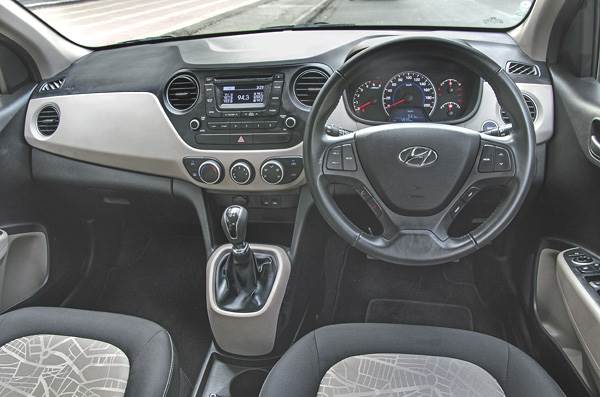
Drive time
Engine refinement is something you’d typically have to compromise on in diesel hatchbacks at this price point. The Bolt changes things. Its Fiat-sourced 1.3-litre diesel engine is easily the quietest of the three motors here, with sound levels further reduced by the Bolt’s thick body shell. Vibrations are also kept at bay rather well. Producing 74bhp at 4000rpm, the Bolt’s engine is also the most powerful here. But it’s not the fastest car of this trio, be it in the 0-100kph dash or through the gears. Part of that is down to its lazy low-end response. The 1.3 diesel only gets into its stride at about 2000rpm. Thereon, it’s smooth sailing to 4000rpm, after which you’ll need great patience to rev it to 5000rpm. So it’s best to short shift if you want to get a move on. The gearbox may lack in precision, but it’s light to operate, as is the clutch. A light clutch is something you’ll find on the Grand i10 too, and its slick, short-throw gearbox is easily the best here. Unfortunately, the gearbox comes mated to an engine that’s not game for overly enthusiastic driving. The engine in question is Hyundai’s 1.1-litre, three-cylinder U2 motor that produces a respectable 70bhp at 4000rpm. As opposed to the Bolt, power comes in earlier here, starting at about 1500rpm, and also fizzles out sooner, at the 3000rpm mark. This makes it more responsive in typical city driving, but not as nice on the highway. Hyundai has also not been able to completely get rid of that thrum typical of three-cylinder engines, so things can get noisy if you wind the motor hard.
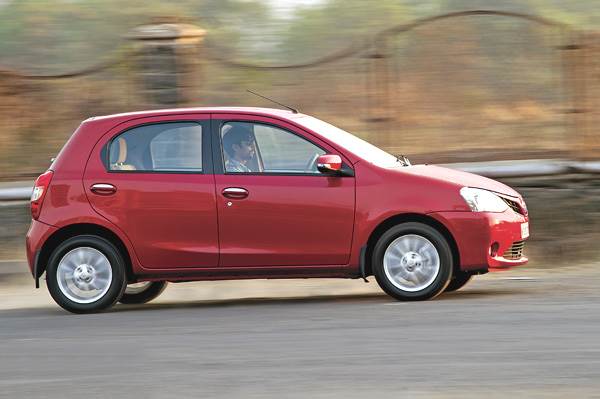
Improving sound deadening on the Liva has been a task for the engineers at Toyota. Its 68bhp, 1.4-litre engine remains quite industrial-sounding, but at least it’s quieter than before. If refinement is its weakness, the linearity of its power delivery is its strength. There’s sufficient pull right from start up, with adequate power right till 4000rpm. It’s not a very exciting engine, but moves the Liva satisfyingly briskly. In fact, the numbers reveal the Liva to be the fastest car of this trio. Undoubtedly, its 980kg kerb weight, the lowest here, has a lot to do with that. All said, the Liva doesn’t have the Bolt’s cruising ability, and more often than not, you’ll need to work the light action gearbox to get past other vehicles.
We’ve not had a chance to test the Bolt for fuel economy just as yet. For the record, the Liva returns 14.5kpl in the city and 19.3kpl on the highway. The Grand i10 also does well here with 15.4kpl in the city and 19.6kpl on the highway.
The ride stuff
All three cars rely on front MacPherson struts and a rear torsion bar for suspension duties with electrically assisted steerings. But that’s where the similarities end, because each car handles otherwise and takes the rough stuff differently too.
Straight off the bat, the Bolt impresses with its ability to mask the severity of most potholes. It goes over the bumps smoothly and does so without much drama. There is some amount of body movement, but nothing you wouldn’t expect on a comfort-oriented hatchback. At times, clunks from the otherwise quiet suspension are your only indicators of the poor condition of the road below. At faster speeds as well, the Bolt feels nice and composed. It’s also the only car here you can drive with some verve around bends. A certain Narain Karthikeyan’s inputs during the Bolt’s development seem to have made the difference. Sure, the Bolt’s no Swift, but the good grip levels and the general level of confidence it inspires make you look past the considerable roll and the lightness of the steering.
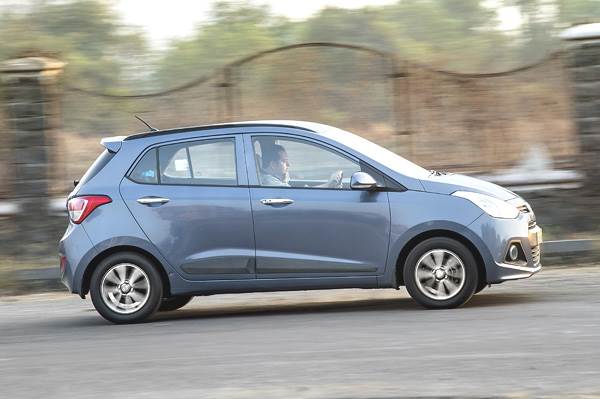
The Liva also has a light steering, but it doesn’t weigh up as much as the Bolt’s. So easy as it is to twirl at city speeds, it’s not very accurate when the going gets faster. However, you do get the feel that were the steering more feelsome, the Liva could have actually been quite fun to drive. It makes for a good cruiser though, because at highway speeds, the ride remains quite flat and poised. That said, the Liva doesn’t feel as settled as the others at lower speeds, which is a shame because the Liva’s other characteristics make it quite city-friendly.
Grand i10 users will find it feeling the best in day-to-day driving in city confines. The steering is pleasant enough at city speeds and the suspension also does well to smoothen out bumps. But when you up the pace even slightly, the Grand i10 gets out of its comfort zone. The steering, though well weighted, is not accurate and the suspension also tends to crash through potholes. Rear seat passengers, in particular, will find themselves being thrown about when the going gets fast.
Price wise
Now that you know how these cars are as products, it’s time to bring in the small matter of their price tags and start the elimination process. Priced at Rs 7.21 lakh (ex-showroom, Delhi), the Toyota Etios Liva VXD is the most expensive car here. Thing is, it has no right to be. Because despite improvements over the years, it still looks and feels quite ordinary. It is a comfortable and spacious city car, no doubt, but also one that doesn’t seem to give you your money’s worth.
That’s something the Grand i10 1.1 Asta, that costs Rs 6.71 lakh, excels at. Its smart and feature-rich cabin is just that well turned out. For city transport, the Grand i10 does fit the bill quite well, but if you look at the big picture, it’s not flawless. The engine lacks the long legs for highway driving and driving dynamics are still quite mediocre.
And that brings us to the Bolt. Once again, it’s a car that has its fair share of weaknesses – its engine is unenthusiastic at low revs, the seats are a touch firm and cabin storage space is simply poor. However, its strengths far outweigh these lesser points. Overall refinement is very good, the ride quality is excellent and space on the inside is remarkable. Sure, in top-spec XT form, the Bolt diesel is expensive (Rs 6.99 lakh) as Tatas go but it does come loaded with lots of features to justify the price. And in the final analysis, it’s the one that gets our vote. At long last, Tata has the right product. Let’s hope it can deliver on durability too this time around.

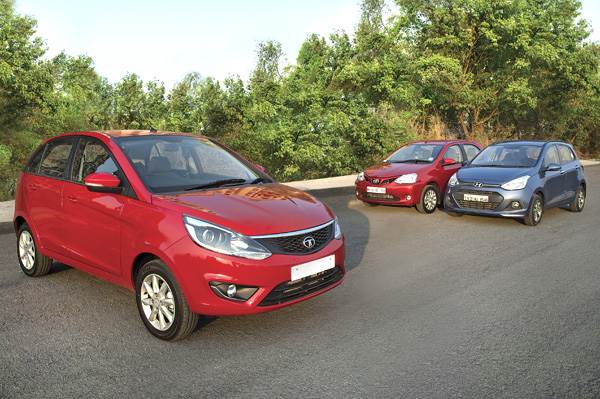
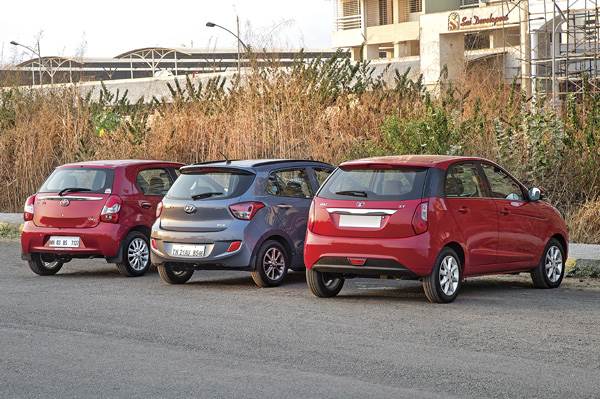


Comments
Member Login
Personal Details
No comments yet. Be the first to comment.